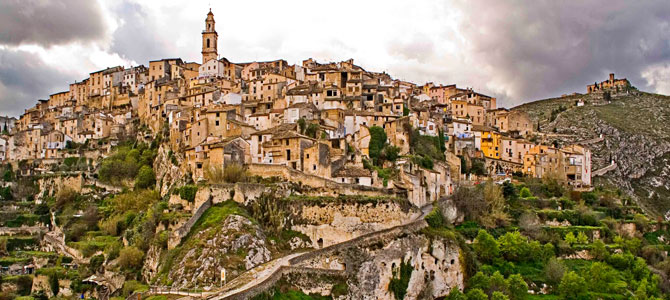We hope that this post will amaze you. This time, we’re looking at the area of Xàtiva which contains a series of little-known places that are well worth exploring during a visit to this region.
Get ready for a tourist route that will take you from the historic town of Xàtiva to the impressive Canal de Navarrés, a natural jewel that will take your breath away. Get ready for an adventure filled with delightful landscapes, history and discoveries.
Xàtiva
Our route begins in Xàtiva, which is situated on a hill and is known for its impressive castle, one of the largest in all of Spain. As you approach the town, you will be impressed by the panoramic views, with its castle walls as the central figure. This thousand-year-old fortress is a living testament to the region’s history and a symbol of the greatness that Xàtiva once enjoyed.

Once inside the fortress you will find yourself taking a journey through time. Walk along the ancient walls, explore the towers and admire the spectacular views of the surrounding countryside from the Bellveret viewpoint. You will also be able to discover the Aljibe de Mont Sant, a medieval water cistern with an impressive vaulted structure which has retained its function as a water reservoir to the present day.
While you explore the town, take a stroll through the old quarter where you can admire the beautiful facades of the traditional houses, charming squares and the impressive Collegiate Basilica of Santa María, a Herreran architectural jewel that, along with the castle, are the town’s two most important buildings.
In addition to the castle and old quarter, Xàtiva has other points of interest to offer. Don’t forget to visit the Xàtiva Fine Art Museum, where you can view a collection of works including those of Goya, Antonio Miró and Ribera. You can also enjoy the local cuisine in the welcoming restaurants and try traditional delicacies such as the paella and home-made desserts.
However, Xàtiva is not just historic monuments, it is also a vibrant cultural centre. Various events and activities are organised throughout the year including concerts, exhibitions and festivals. This gives visitors an opportunity to immerse themselves in the local culture and experience Xàtiva’s festive spirit.
Bocairent
Our next stop on this route takes you to the lovely town of Bocairent, which is situated at the foot of the Sierra Mariola, about half an hour by car from Xàtiva. Bocairent is a destination that offers the perfect combination of history, architecture and nature. Its Arab-style cobbled streets and its medieval houses make it a very special place. You should visit the “Cava de Sant Blai” (Sant Blai Cave), a structure in which snow was stored to create blocks of ice used for preserving food.
Within the vicinity, you should also visit the “Covetes dels moros”. This is a series of interconnected caves that were excavated between the 10th and 11th centuries. Although it is well worth a visit, this location is not suitable for people who suffer from claustrophobia.

Sierra Mariola Natural Park
We continue our journey towards the Sierra de Mariola Natural Park, a natural treasure that will take your breath away. The Sierra de Mariola is notable for its archaeological finds, evidence of a human presence since prehistory. The climate, the abundance of water and different natural resources have been determining factors for the establishment of different settlements throughout history.
The Sierra de Mariola is criss-crossed by a network of tracks and paths used in the past by the hunters and shepherds who have left their mark on this mountain. In order to preserve this environment, the Sierra de Mariola was declared a Natural Park in 2002, which gave it special protection.
This area includes the regions of the Vall d’Albaida, l’Alcoià and the Comtat, and it contains a section of the GR-7 track, the first long-distance track that was designated in Spain in 1973. Visitors can enjoy outings on foot, on horseback or by bike using various well-signposted routes. On these routes, you can discover interesting buildings, such as shrines, country houses and towers as well as natural landscapes of singular beauty, such as the source of the Vinalopó river, the summit of Montcabrer, at an altitude of some 1,390 metres, the Font de Mariola or la Cueva de la Sarsa in which important Neolithic remains have been found. This cave is a perfect introduction to speleology (caving).

Canal de Navarrés
Lastly, we arrive at the Canal de Navarrés, a particularly beautiful area where water takes centre stage. This region consists of 8 towns: Anna, Bicorp, Bolbaite, Chella, Enguera, Millares, Navarrés and Quesa and the area offers great sustainable tourism.
This region is notable for its rivers, valleys and ravines which create film set surroundings. Outdoor activities, such as cycling routes, archery or cave art routes have been created through this natural and cultural heritage.
Explore the trails, take a dip in the many bathing areas and enjoy the authentic regional flavours.

Here ends this article with the aim of discovering a little of the charms of the Valencian Community not so far from its famous beaches. If you want to stay in Alicante or Valencia it is worth booking a few days to visit these places. Until the next article!






